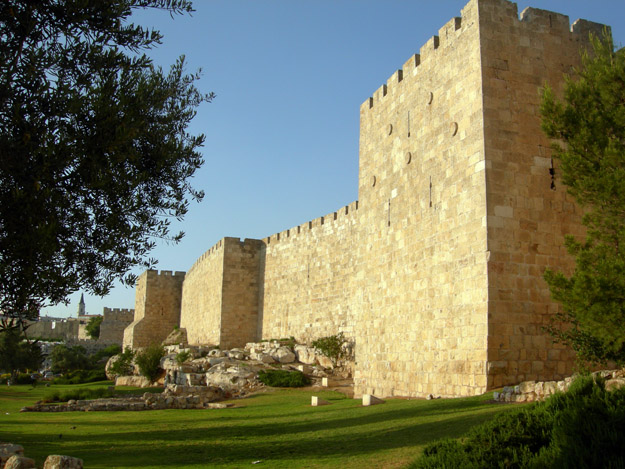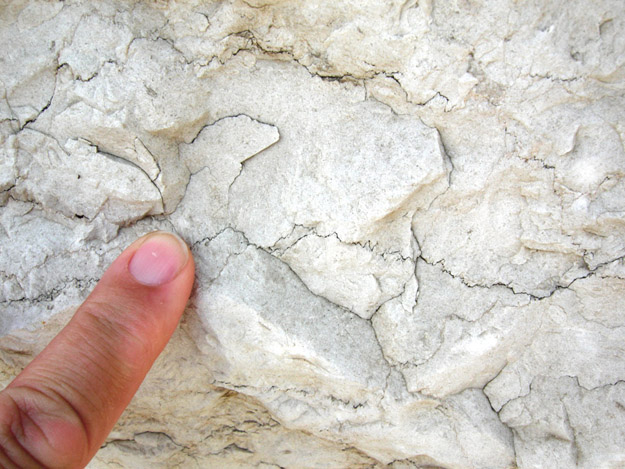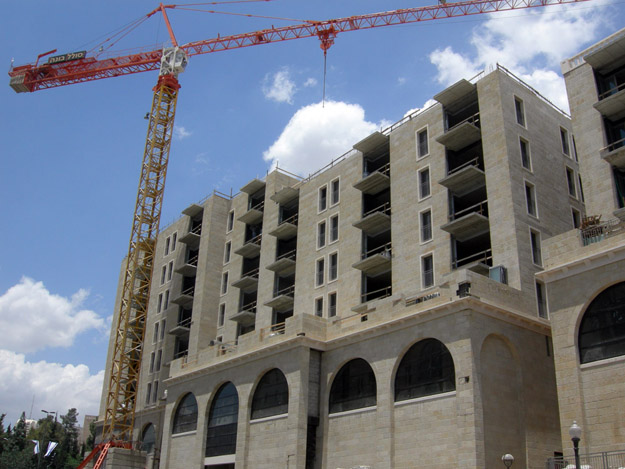Jerusalem is indeed the “city of gold” when the sun rises or sets on it. The slanting rays give the beautiful stonework on the facings of its buildings a golden glow. Since the British captured the city in World War I, it has been the law that all buildings must be faced with Jerusalem Stone, which is a mix of Late Cretaceous limestones and dolomites quarried in this part of the Judean Hills.
The most beautiful and durable of the stone types is called meleke. It is a Turonian (Late Cretaceous) biomicrite with numerous stylolites (jagged lines showing internal pressure dissolution), some trace fossils, and occasionally numerous molds of fossil mollusks.
The local stone can be easily seen in outcrops on the north side of the Old City where the walls were built directly atop old quarry sides. The present quarries are now mostly in the West Bank and are very busy supplying stone for new construction throughout Jerusalem.






I imagine that the entire city looks like Dickinson’s campus.
I find it absolutely fascinating that you were able to determine so much about the rocks in the meleke! Fascinating!